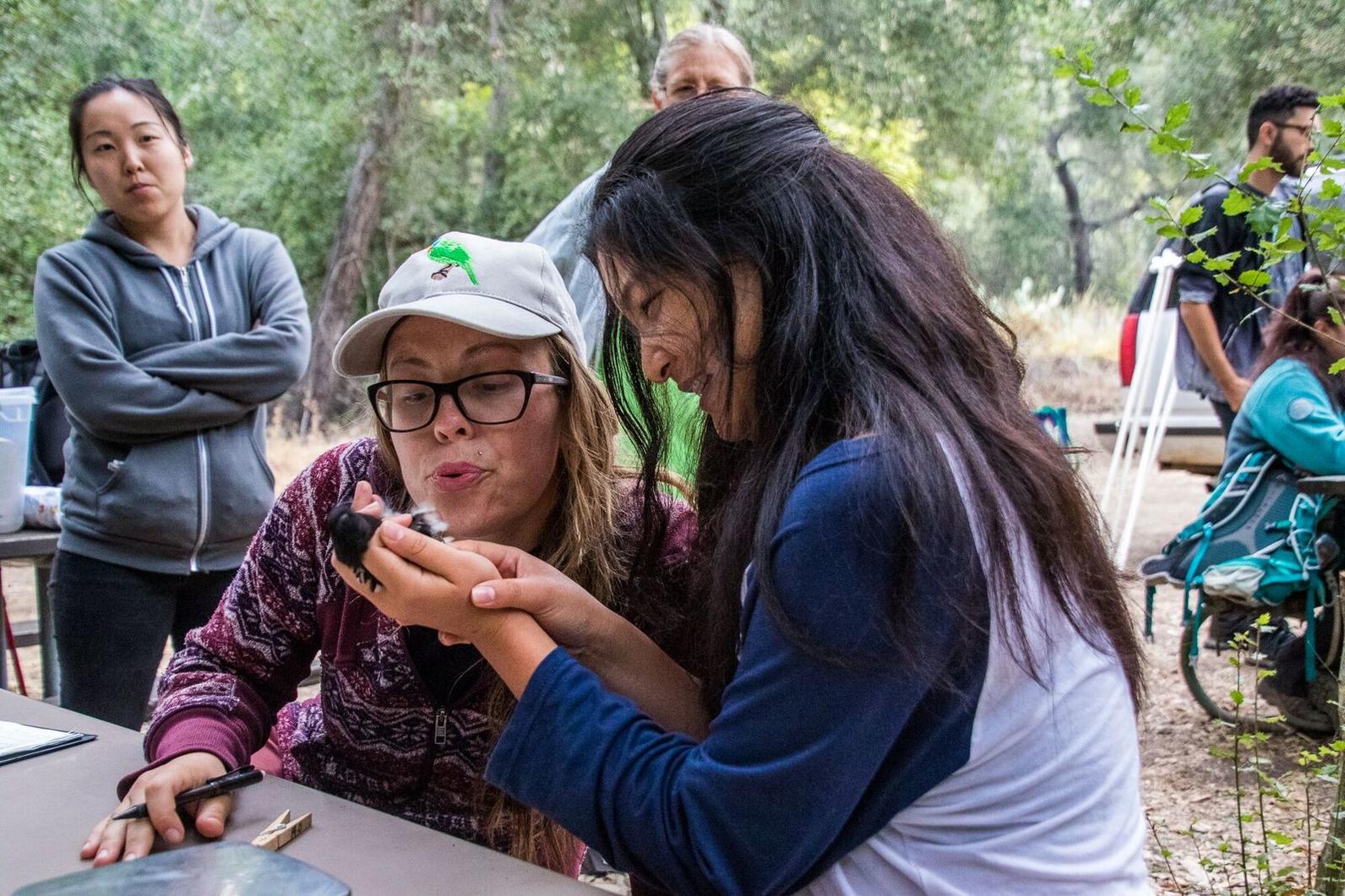
Way back in 1999 I partnered with the Institute for Bird Populations in Pt. Reyes CA to set up a bird banding station at the Audubon Starr Ranch Sanctuary in Orange County. We recruited volunteers who were trained by a Ranch ornithologist in the very technical MAPS (Mapping Avian Productivity and Survivorship) protocols for ageing and sexing songbirds. Six of the original volunteers are still banding with us.
MAPS data help us understand factors that might drive declines in bird populations, problems causing declines on breeding and non-breeding grounds, and the effects on bird populations of climate and habitat loss. Understanding these factors helps make decisions on actions to try to help these birds.
The MAPS Program is a continent-wide collaborative effort among public agencies, non-governmental groups, and individuals to conserve birds and their habitats through monitoring. Started in 1989, there are now more than 1,200 MAPS stations spread across nearly every state and Canadian province.
MAPS uses a standardized protocol that calls for a system of fine mesh nets to capture birds during the summer nesting season. MAPS ornithologists and volunteers across the country band the birds captured in nets and collect information on their age, sex, body condition, and reproductive status. Captured birds are given a lightweight, numbered aluminum leg band and released unharmed. Subsequent recapture data provide information on survival, reproductive rates, and sometimes, movement patterns.
Starr Ranch banding volunteers are supervised each season by an experienced seasonal ornithologist. The ornithologist offers beginning and advanced bird banding workshops every March to train new banders to add to our dedicated corps of volunteers. We offer an opportunity for kids and adults to observe how and why we band birds during both the winter and breeding season.
This season we welcomed many Cal State Fullerton undergrads into our volunteer corps who became interested during an ornithology class field trip to the banding station. The top captures for the 2017 MAPS season were:
- Pacific-slope Flycatcher: 26
- Lesser Goldfinch and Rufous-crowned Sparrow: 22
- Spotted Towhee: 16
- House Wren/Hutton's Vireo and Orange-crowned Warbler: 15
Although our total number of captures is lower than previous years, we had the highest number of newly banded birds since 2011, perhaps a sign that our birds were more productive this year than in the five preceding drought years.
This season, our total rainfall was a couple of inches over average for the first time since 2011, when the drought began, mostly due to heavy January rains.
We also captured more Rufous-crowned Sparrows this year than ever before, including the oldest one on record (six years old!). Another highlight of the season was capturing the station's first ever Black-chinned Sparrow, an adult female in full breeding condition. The two sparrows are both birds typical of coastal sage scrub and the net where most were captured is in a more open, shrubby area than other nets at our MAPS station.
Sandy DeSimone is Director of research and education at the Audubon Starr Ranch Sanctuary.
By Sandy DeSimone
Monthly Giving
Our monthly giving program offers the peace of mind that you’re doing your part every day.




